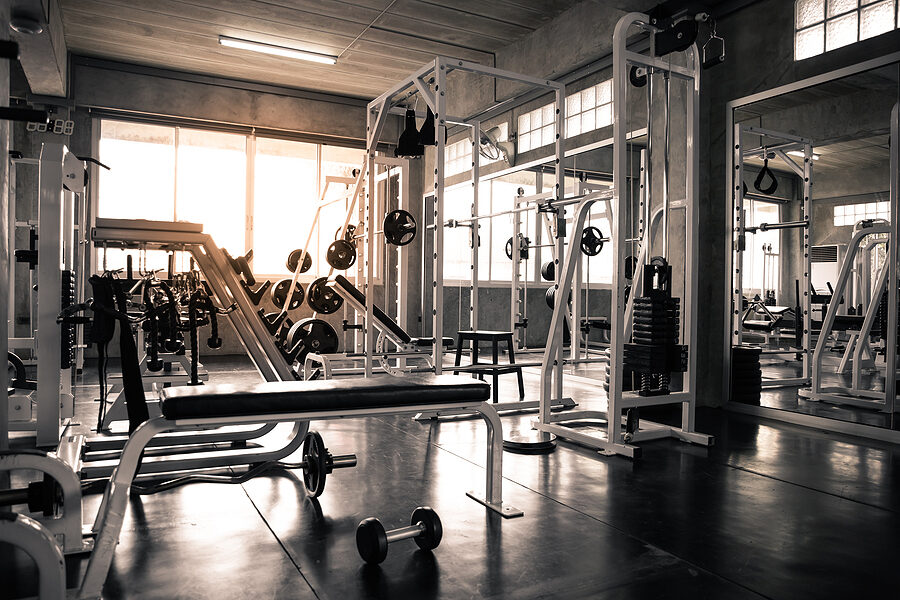NYC Bids Adieu to Physical Culture Establishments (PCEs)
By Austin Regan, R.A.
In zoning terms, health clubs, massage facilities, and other fitness establishments have long been known as “Physical Culture Establishments,” or PCEs. Historically, New York City has not allowed PCEs as of right virtually anywhere. Applicants are required to get a special permit from the Board of Standards and Appeals to obtain a Certificate of Occupancy (CO) for such spaces.
Like dinosaurs, VHS tapes, pet rocks, network television, and brick-and-mortar stores (“we don’t have that in stock, but you can order it online and make my job expendable”), the PCE will soon be extinct. Everyone’s favorite workout facility will now be called a “Health and Fitness Establishment (HFE),” no longer requiring a BSA special permit.
Defining Health and Fitness Establishments
The zoning definition of a Health and Fitness Establishment follows:
A “health and fitness establishment” is any establishment that is equipped and arranged to provide instruction, services, or activities which improve or affect a person’s physical condition by physical exercise or provide relaxation services.
Health and fitness establishments include, but are not limited to, the following:
(a) establishments containing high-intensity uses, including:
(1) gymnasiums where the predominant use of floor space involves the use of exercise equipment or weights; or
(2) gymnasiums and other indoor recreation establishments used for activities, including basketball, martial arts for adults, handball, paddleball, racquetball, squash, tennis, rock climbing, soccer, or volleyball;
(b) other establishments used for exercises including aerobics, exercise dance, youth martial arts, Pilates, or yoga studios; and
(c) therapeutic or relaxation service establishments including tanning salons, spas, bathhouses, isolation flotation tanks, or meditation facilities.
Establishments containing high-intensity uses listed above are subject to the supplemental use regulations of Sections 32-413 and 123-33, as applicable.
Rules for Existing PCE’s
What does this change mean for existing PCEs? These facilities can still operate as per below:
For “physical culture or health establishments” existing on [date of adoption] that were allowed pursuant to special permit by the Board of Standards and Appeals, such establishments may continue under the terms and conditions established at approval and may continue after the expiration of such special permit, provided that such establishment is not enlarged, expanded, or otherwise changed in a manner that deviates from the approved establishment.
As an alternative, a “physical culture or health establishment” existing on [date of adoption] may continue pursuant to the applicable provisions for health and fitness establishments, and may enlarge, expand, or change the range of activities therein, in accordance with the District regulations, provided that any applicable supplemental use regulations are met.
HFEs will be allowed in commercial and manufacturing districts that permit UG 6C (HFEs < 10,000SF) or UG 9A (HFEs any size).
HFEs and ‘High Intensity Uses’
Note that in the HFE definition, a distinction is made for facilities with “High Intensity Uses.” This term is not explicitly defined, but the following examples appear in the HFE definition above and are repeated below:
(a) establishments containing high-intensity uses, including:
(1) gymnasiums where the predominant use of floor space involves the use of exercise equipment or weights; or
(2) gymnasiums and other indoor recreation establishments used for activities, including basketball, martial arts for adults, handball, paddleball, racquetball, squash, tennis, rock climbing, soccer, or volleyball;
HFEs with “High Intensity Uses” will also be subject to the zoning section below:
32-413 – Health and Fitness Establishments
C1 C2 C3 C4 C5 C6
In the districts indicated, high-intensity uses, as listed in the definition of health and fitness establishments, shall be subject to the following additional enclosure and environmental conditions:
(a) such high-intensity uses shall be located within completely enclosed buildings; and
(b) where such high-intensity use is located in a building containing any residential, community facility, or commercial use, an acoustical engineer shall verify to the Department of Buildings prior to the issuance of a Certificate of Occupancy that such use is designed according to International Organization for Standardization (ISO) or American National Standards Institute (ANSI) standards for noise control to meet the New York City Noise Code, administered by the Department of Environmental Protection.
Such high-intensity uses shall meet the following standards for noise and vibration:
(1) impact noise measurement shall comply with ISO 16283-2:2020, or subsequent versions; and
(2) vibration measurement shall comply with ISO 8041:2005 or ANSI/ASA S2.71, or subsequent versions, for on-site vibration measurement and analysis.
With the latest zoning text changes, the definition of Physical Cultural Establishment has disappeared. Elimination of the PCE has also rendered the need for BSA approval obsolete. Health and fitness establishments are now as of right, as described above.
If you have any further questions, contact your Metropolis Group project manager at 212.233.6344.


